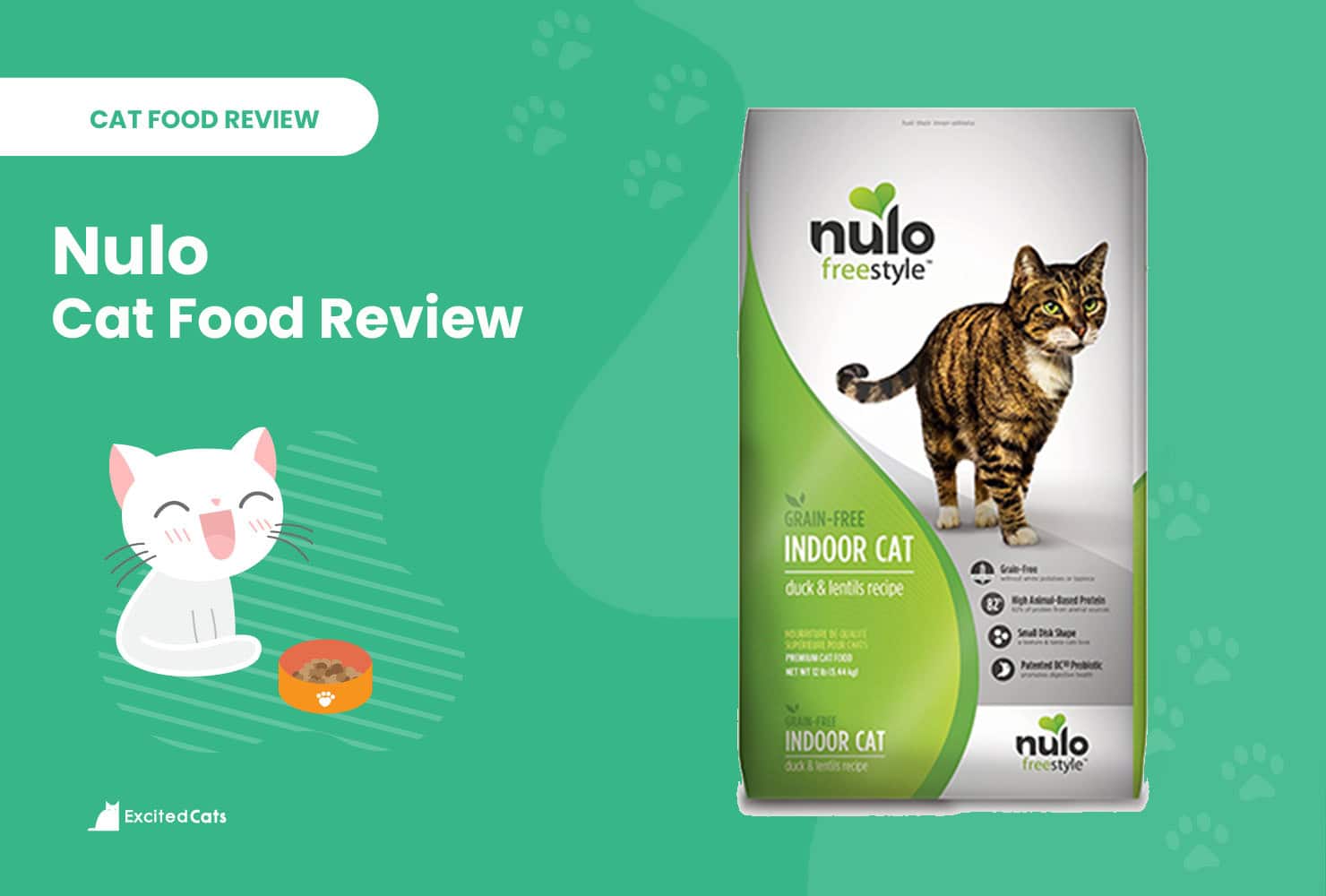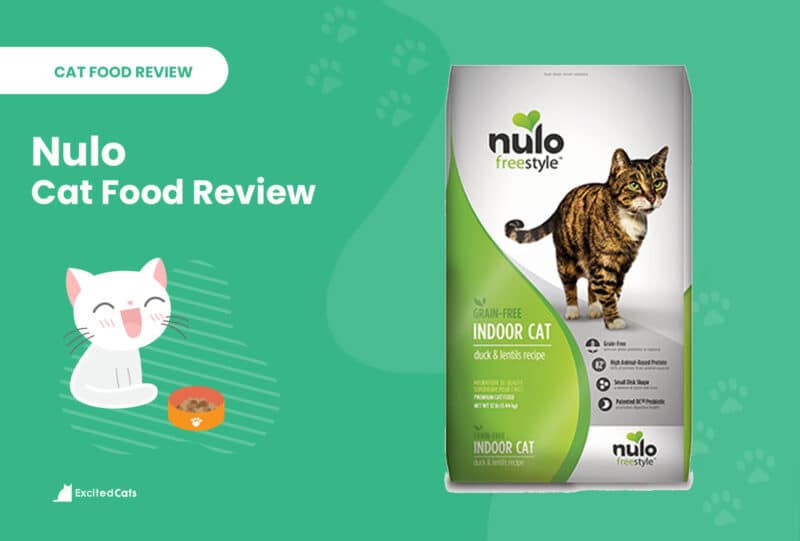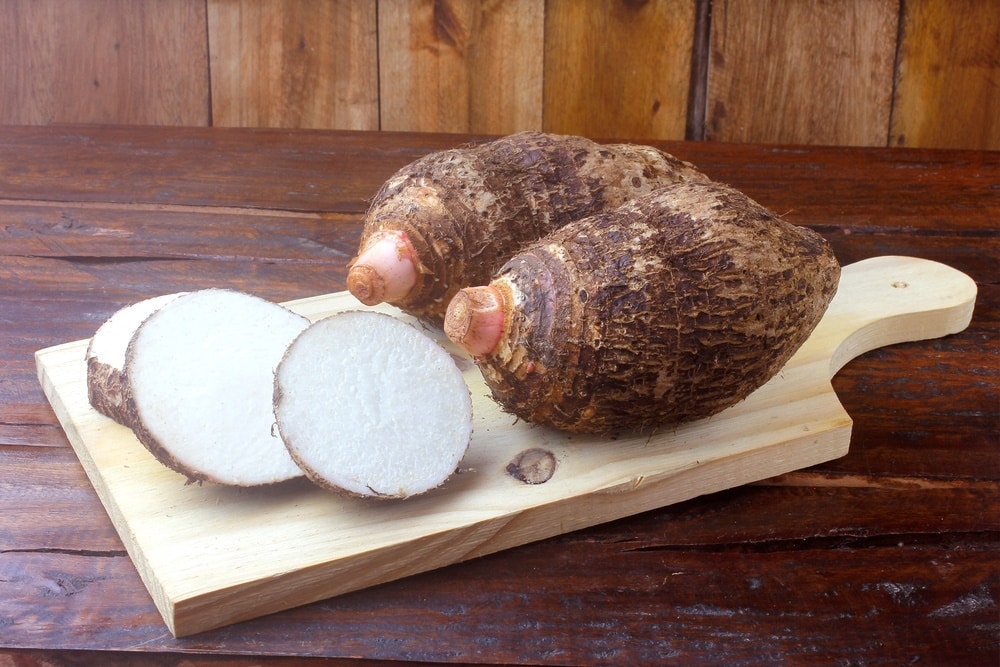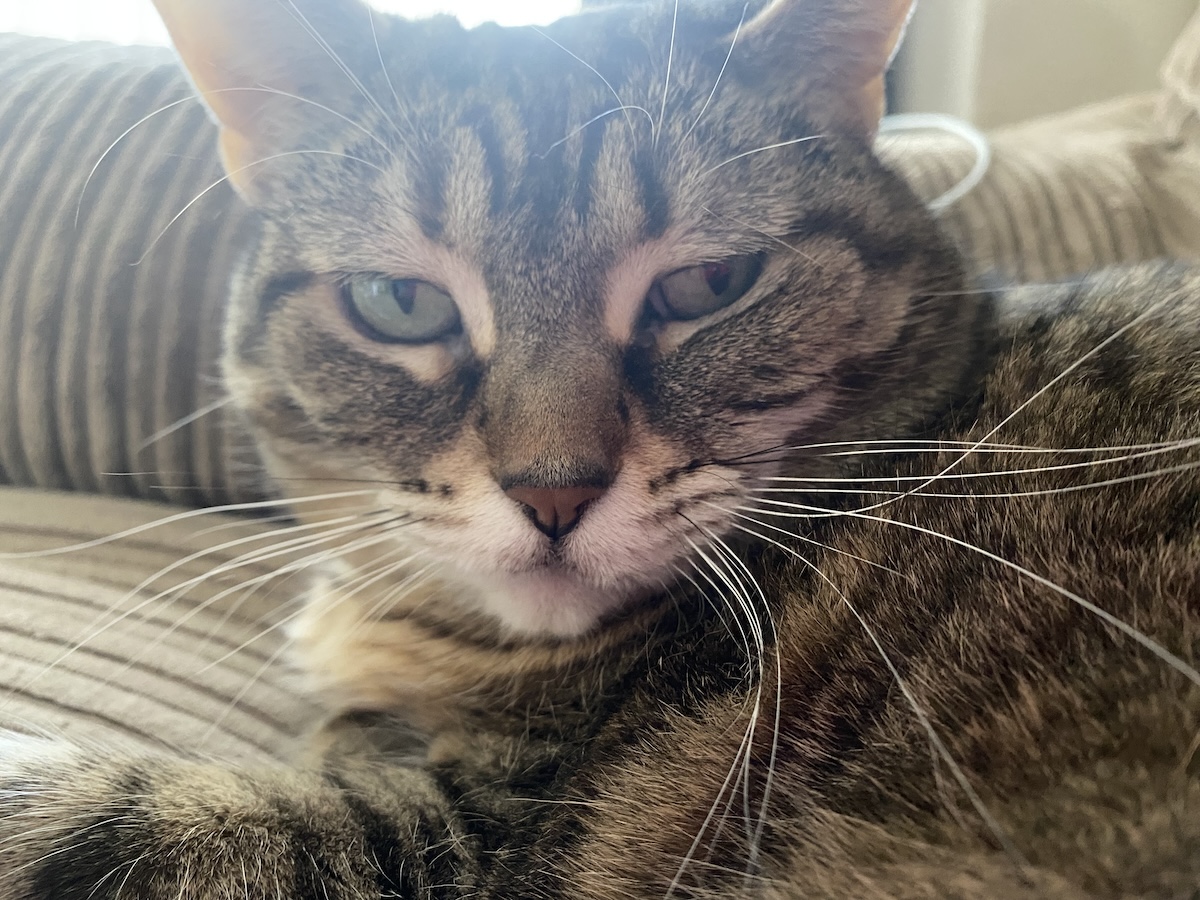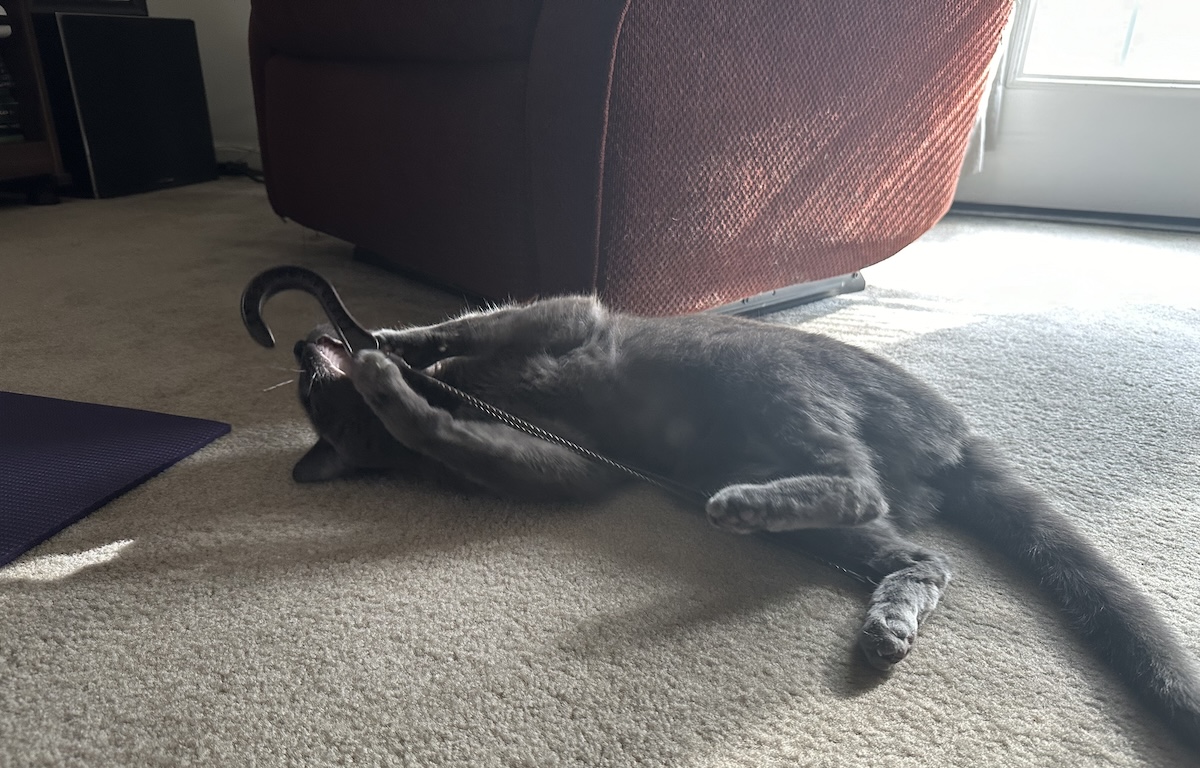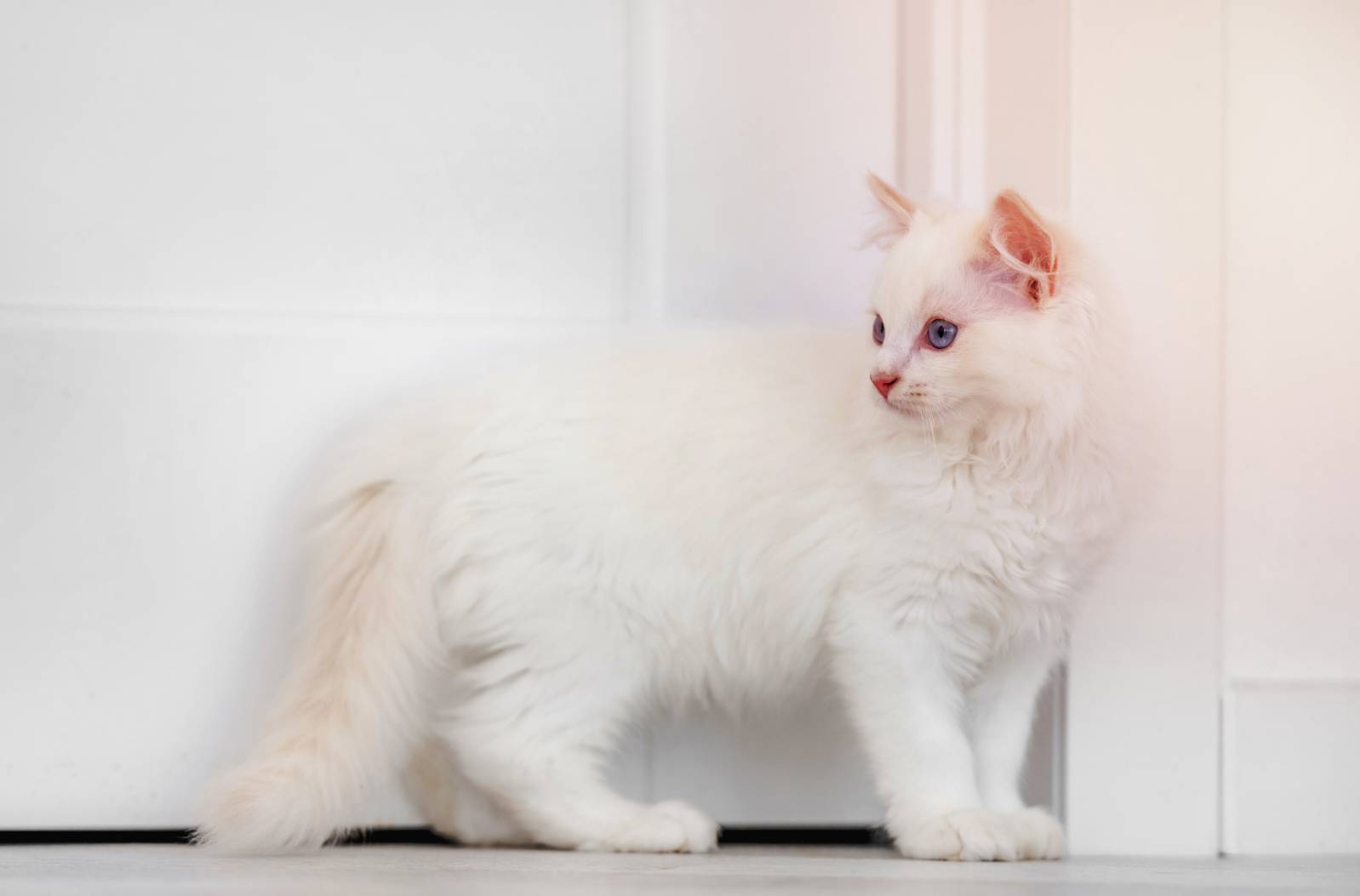Review Summary
We give Nulo cat food a rating of 4.5 out of 5 stars.
Nulo is a California company that makes a wide range of cat and dog foods. It started with a man trying to take better care of his dog and blossomed into a full-grown pet care business with high-quality pet food being a top priority. Nulo foods are high in protein and low in carbohydrates and include omega fatty acids and antioxidants that promote good health. They have dozens of recipes to choose from, so your cat is sure to find one they will like.
Keep reading while we look at what makes this food so good.
At a Glance: The Best Nulo Cat Food Recipes:
| Image | Product | Details | ||
|---|---|---|---|---|
| Our Favorite |
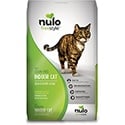
|
Nulo Adult Grain-Free Indoor Dry Cat Food |
|
CHECK PRICE |
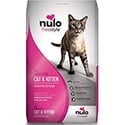
|
Nulo Adult & Kitten Grain Free Dry Cat Food |
|
CHECK PRICE | |
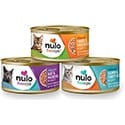
|
Nulo Adult & Kitten Grain Free Canned Wet Cat Food |
|
CHECK PRICE | |
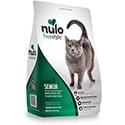
|
Nulo Senior Grain Free Dry Cat Food |
|
CHECK PRICE | |
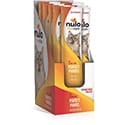
|
Nulo Freestyle Perfect Purees |
|
CHECK PRICE |
Nulo Cat Food Reviewed
Who Makes Nulo, and Where Is It Produced?
Nulo is the company’s name that makes Nulo cat and dog food, and their headquarters is in California. All the food is USA made, and all of the ingredients come from here as well.
Which Types of Cats Is Nulo Best Suited For?
Nulo is well suited for all pets and has higher quality ingredients than most other brands. There are also plenty of recipes, so it shouldn’t be hard to find a few your pet will eat. There are recipes for kittens and senior cats and some for those with sensitivities and other health issues. They have full lines of wet cat food, dry food, freeze-dried food, and treats.
Which Types of Cats Might Do Better With a Different Brand?
The only pets we could think of that would be better off with a different brand are those ordered on a specific food by a veterinarian. If your pet has a serious health condition, then you should stick with the food your veterinarian prescribed.
Discussion of the Primary Ingredients (Good and Bad)
Here are the primary ingredients in most recipes of Nulo cat food.
Protein
Roughly 83% of the protein in Nulo cat food is from an animal source, where a cat would normally get its protein in the wild. Cat foods made with animal proteins have more essential amino acids and are generally better liked. All Nulo cat food contains whole meat like chicken, turkey, duck, or salmon as its main ingredient.
Real Fruits and Vegetables
Nulo food also contains real fruits and vegetables like cranberries, sweet potatoes, blueberries, carrots, kelp, spinach, and other wholesome foods. These natural ingredients provide fiber to help balance your cat’s digestive system, antioxidants to help boost their immune system, and plenty of vitamins and minerals for overall health.
Rosemary Extract
Nulo food uses Rosemary extract or similar natural preservatives. There are no harmful chemical preservatives, like BHA or BHT, in any of the recipes. You will also not find any dyes.
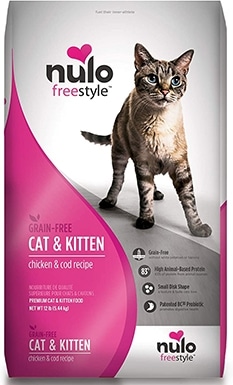
Grain-Free
Nulo food is grain-free and contains no corn, wheat, or soy products. These ingredients are not natural to your cat’s diet and could upset their digestive system or cause an allergic reaction. Corn and soy are also two of the most genetically modified foods you can feed your cat.
High Protein, Low Carbohydrate
Cats are carnivores and do not need carbohydrates in the diet. Nulu takes this into account and only provides the essentials so your cat can grow healthy and live a long life. Protein gives your cats the energy they need to stay active, and it helps them stay full longer.
Multiple Recipes
One great advantage of the Nulo brand of cat food is the great variety it offers pet owners. Cats are notoriously picky, and it can be quite difficult to find a brand of food they will eat. Nulo knows this and solves the problem by offering you dozens of recipes that you can get in wet food, dry food, or even freeze-dried food.
Feeding your cat a high-quality diet is important for keeping them healthy and happy. But it goes beyond the food you choose; the dishes they use also matter. The Hepper NomNom Cat Bowl is our favorite for its unique, five-star design that protects from whisker fatigue and promotes good posture which also aids in better digestion. As an added bonus, it’s beautifully crafted and offers a modern take on the traditional cat bowl that fits seamlessly with all home stylings. Learn more about the NomNom by clicking here. At Catster, we’ve admired Hepper for many years and decided to take a controlling ownership interest so that we could benefit from the outstanding designs of this cool cat company!
A Quick Look at Nulo Cat Food
- High in protein
- Whole meat as first ingredient
- No chemical preservatives
- Real fruits and vegetables
- Wide variety
- Pellets are small
Recall History
So far, there have been no recalls of Nulo food reported. While no recalls is certainly great news, experts warn that Nulo is still a relatively new company and is less than ten years old.
Reviews of the 3 Best Nulo Cat Food Recipes
Let’s look at three of our favorites.
1. Nulo Adult Grain-Free Indoor Dry Cat Food
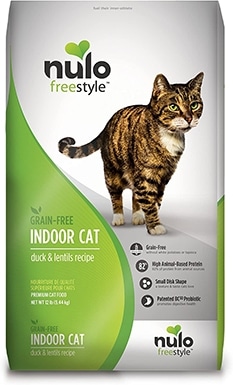
Nulo Grain-Free Dry Cat Food is a perfect dry food for your cat that contains no corn, wheat, or soy that can throw off their digestive system. It’s a low-carbohydrate recipe, so it supports weight management and helps prevent obesity. All ingredients are low-glycemic, so it won’t affect your cat’s blood sugar, and it contains real fruits and vegetables that taste better and provide helpful nutrients for better health management. Patented probiotics help with digestion and boost the immune system.
The only problem we had with Nulo Grain-Free Dry Cat Food was that the kibble is small for some cats.
Calorie Breakdown:
- No corn, wheat, or soy
- Supports weight management
- Low glycemic ingredients
- Contains real fruit and vegetables
- Provides probiotics
- Small kibble
2. Nulo Adult & Kitten Grain-Free Canned Wet Cat Food
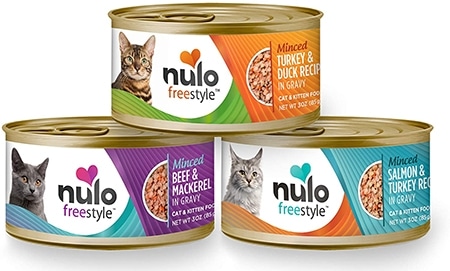
Nulo Adult & Kitten Grain-Free Canned Wet Cat Food is the wet food version of Nulo’s high-quality recipe. It uses five protein sources for maximum protein and assortment of nutrients, giving this brand a higher nutritional value than other wet food brands. It contains no corn, wheat, or soy, and its low carb content makes it good for weight management. It has turkey listed as its first ingredient, and it contains real fruits and vegetables like cranberries and chickpeas.
The only downside we experienced while reviewing Nulo Adult & Kitten Wet Cat Food was that some of our cats didn’t like it.
Calorie Breakdown:
- Five animal protein sources
- Higher nutritional value
- Supports weight management
- No corn, wheat, or soy
- Turkey as first ingredient
- Real fruits and vegetables
- Some cats don’t like it
3. Nulo Freestyle Perfect Purees
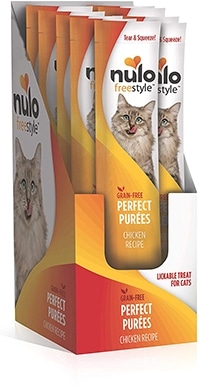
Nulo Freestyle Perfect Purees are the Nulo version of treats. It’s a limited-ingredient, high-moisture food made mostly of tuna. It’s a “good for you” treat that also contains prebiotics, which can help boost the natural probiotic supply in your cat’s gut. There are no corn, wheat, or soy ingredients and no harmful chemical preservatives.
Nulo Freestyle Perfect Purees is one of the few products from Nulo not made in the USA. Thailand, one of the leading manufacturers of human-grade tuna, sources and packages the treat. Unless it’s on sale, it’s also usually a bit more expensive than other treats.
- High moisture content
- Contains prebiotics
- No corn, wheat, or soy
- Limited ingredients
- Not made in America
- Expensive
What Other Users Are Saying
Most online reviews of Nulo cat food products tend to be favorable. Many Chewy customers praised the quality. Amazon reviewers liked that the treats kept their cats hydrated and promoted digestion.
Conclusion
Nulo Food is a relatively new brand that’s growing in popularity because of the high quality of its ingredients and its commitment to pet health. There are many recipes to suit any picky eater and even recipes to help with certain health conditions. We recommend starting with dry food like Nulo Grain-Free Dry Cat Food that we mentioned earlier because dry kibble helps clean your cat’s teeth and can prevent the onset of dental disease if used long-term. Each recipe will provide your pet with a balanced meal with rich nutritional value that helps prevent obesity.
We hope you have enjoyed our in-depth look at Nulo cat food and have decided to give it a try. If you have learned something new and think it can be of interest to someone else, please share our Nulo cat food review on Facebook and Twitter.
See also:
Contents
- Review Summary
- At a Glance: The Best Nulo Cat Food Recipes:
- Nulo Cat Food Reviewed
- Who Makes Nulo, and Where Is It Produced?
- Which Types of Cats Is Nulo Best Suited For?
- Which Types of Cats Might Do Better With a Different Brand?
- Discussion of the Primary Ingredients (Good and Bad)
- Grain-Free
- High Protein, Low Carbohydrate
- Multiple Recipes
- A Quick Look at Nulo Cat Food
- Recall History
- Reviews of the 3 Best Nulo Cat Food Recipes
- 1. Nulo Adult Grain-Free Indoor Dry Cat Food
- Calorie Breakdown:
- 2. Nulo Adult & Kitten Grain-Free Canned Wet Cat Food
- Calorie Breakdown:
- 3. Nulo Freestyle Perfect Purees
- What Other Users Are Saying
- Conclusion

